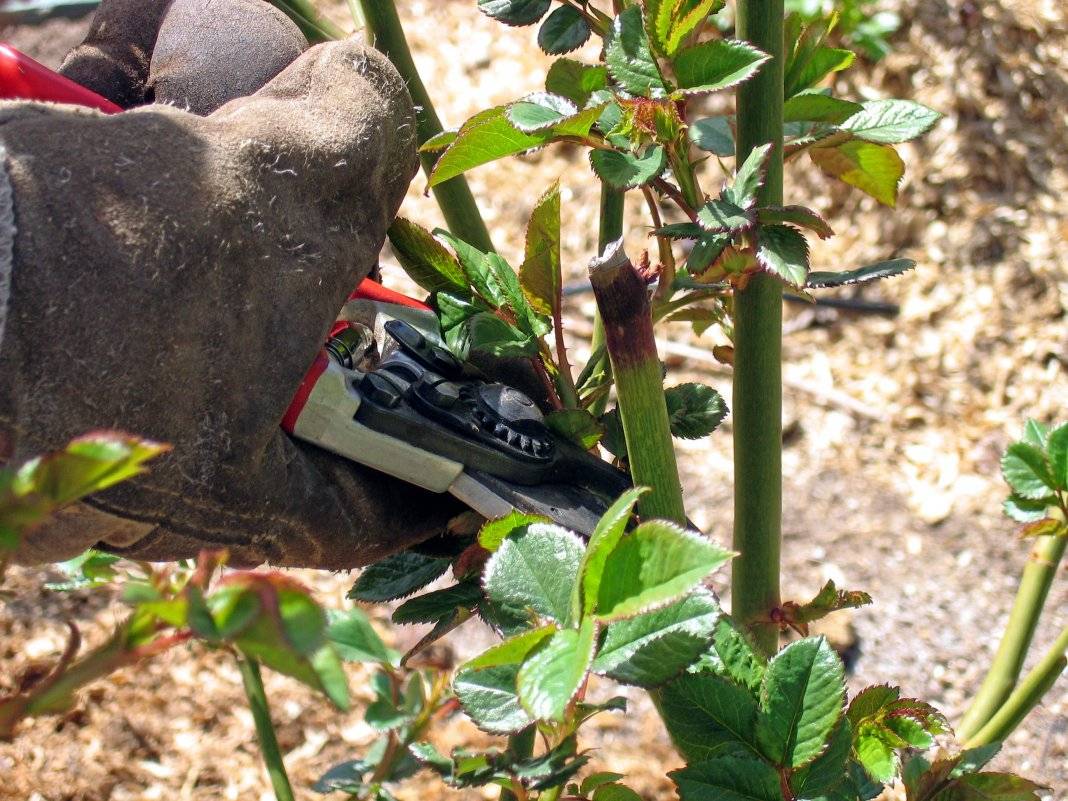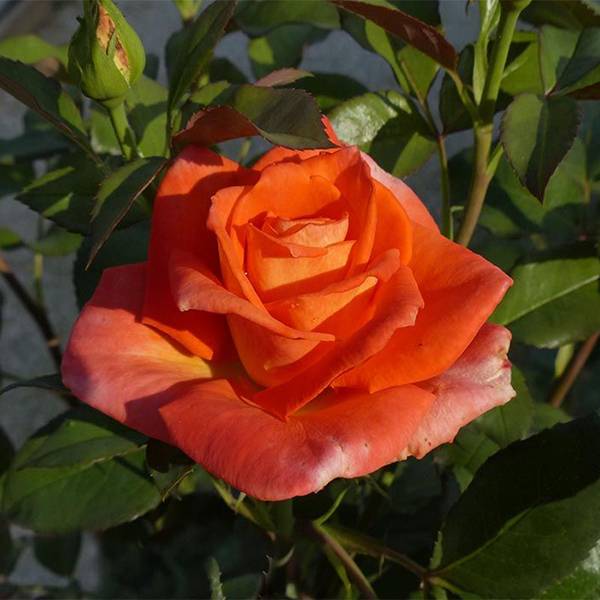Rose Monica (Monica) - what kind of cut variety, description
Content:
Rose Monica with bright red-yellow petals is a representative of the group of hybrid tea varieties. It is the result of the work of German breeders. On long erect shoots of this variety, flowers appear one at a time, so it is most often grown for cutting.
Short description
The plant has long, straight shoots. The inner surface of the petals is red-orange, the outer one is somewhat lighter - yellow-orange. The base of the petals is yellow. The diameter of a fully blossoming bud is 10-11 cm. The height of the bush is up to 2 meters. The leaves are dark green, smooth. Rose Santa Monica is resistant to diseases, tolerates frost well with proper insulation.
Growing a flower, how to plant it in open ground
It is preferable to plant the plant in open ground in mid-May, when the threat of frost has passed and the soil warms up enough.
Location selection
An ideal planting site would be a flat, draft-free area with loose, fertile soil. You should not plant the Monica rose variety in places with close groundwater and poor drainage. Daylight should be diffused, direct rays of the sun only in the morning and evening.
How to prepare the soil and flower for planting
Rose Monica, like all floribund or hybrid roses, prefers nutritious, slightly acidic soil with a pH of 6-6.5. The addition of peat or manure will help to increase the acidity, and to reduce it - lime or ash.
Planting procedure step by step
To plant a rose correctly, you need to take the following steps:
- In the selected place, a hole is dug with a depth and diameter of at least 60 cm so that an earthen lump with roots can be freely placed in it.
- At the bottom of the pit, 10 cm of drainage is laid out. It can be expanded clay, pebbles, shell rock.
- On top of the drainage, a 20 cm thick nutrient soil is poured, mixed with 20 g of superphosphate and 20 g of potassium sulfate.
- The seedling is transferred to the hole.
- The root system is covered with soil, which should be compacted.
- The soil is abundantly watered with water at room temperature and mulched with peat, bark, sawdust.
Plant care
Monica, like any rose, requires intensive care.
Watering and feeding rules
In the heat, you need to water the bushes every 2-3 days. In rainy weather - at least once a week. Loosening and mulching will help preserve moisture in the soil.
Fertilization is carried out in several stages:
- In the spring, when the buds swell, nitrogen fertilizers are applied. The plant needs nitrogen for green mass gain and active growth.
- In summer, complex fertilizers are used that support flowering. You can use liquid formulations for foliar feeding.
- In the fall, after the end of flowering, it is imperative to apply phosphorus-potassium fertilizer.This will help the rose prepare for winter and lay the groundwork for next season's flowering.
Pruning and replanting
Pruning is carried out twice a season.
- The main pruning takes place in October. Non-lignified shoots are cut to solid wood. All leaves, small, diseased branches are removed.
- Sanitary pruning. In the spring, after removing the winter insulation, brown, rotten or dried branches are removed.
Features of wintering a flower
To prepare Monica rose bushes for winter, they begin with pruning. Then they spud the root circle and mulch with a layer of compost 10 cm thick. Before the start of frost, the bushes are covered with spruce branches. The use of spruce branches helps to keep warm, while the air under them does not stagnate, the shoots do not rot.
Blooming rose
The main purpose of a rose on a site is to decorate it with your own flowers.
In summer, when the plant is in bloom, it needs sufficient moisture and nutrients. During this period, be sure to carry out:
- weeding;
- loosening;
- mulching with hay, peat, bark, sawdust;
- watering;
- top dressing with potash fertilizers or chicken droppings;
- preventive fungicide treatments.
After the end of the first wave of flowering, the rose is pruned so that it can grow new shoots and bloom again by autumn. First of all, all wilted buds are cut off, then too long shoots are shortened, the bush is given a harmonious shape.
The shoot is cut over a leaf consisting of 5 small leaves. It should be borne in mind that the young shoot will grow in the same direction as the leaf over which the cut is made.
What to do if the rose does not bloom
The main reasons why a rose does not bloom:
- The bush is too young. There is no flowering in the first year after planting. Even if it is picking up buds, it is better to cut them off, allowing the plant to form a more powerful root system.
- Inappropriate place. The rose is dark, cold, humid.
- Incorrect, too much or no trimming. Faded buds left on the bush inhibit the development of new ones.
- Root shoots. It needs to be removed, the rose is wasting energy.
- Diseases such as bacterial burns.
- The plant has aged, requires rejuvenation.
- Incorrect feeding. An overfed rose will not bloom, as all the nutrition goes into the leaves and shoots. With a lack of nutrition, the plant does not have the strength to bloom.
Flower propagation
Reproduction of roses is carried out by layering, dividing the bush, cuttings. Seed propagation of a hybrid will not preserve varietal characteristics. Information is given in the table.
| Way | When is it produced | Description |
| Semi-lignified green cuttings | summer |
|
| Lignified cuttings | Spring | |
| Dividing the bush | before bud break |
|
| Layers | early spring | Layers at least 1.5 years old are separated from the mother bush and planted as an independent plant. |
Diseases, pests and ways to control them
Monica rose is resistant to fungal and bacterial diseases. But you shouldn't neglect prevention. During the growing season, the bushes are treated with fungicides 2-3 times.
Pests that infect roses (spider mites, scale insects, aphids) can be dealt with with home methods and purchased drugs. Soap solution, turpentine will cope well with a small amount of parasites, if there are a lot of pests, the bush must be treated with pesticides.
Rosa Santa Monika has earned the love of florists and landscape designers. Looks great in single and group plantings. In the southern regions, hedges are formed from hybrid tea roses of this variety. Bright buds stay in a vase for a long time and have a pleasant aroma.



















